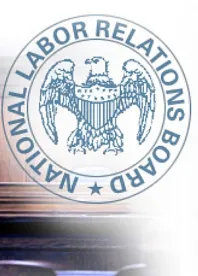On Dec. 15, 2014, the new, final National Labor Relations Board (NLRB) union election rules were published in the Federal Register. The NLRB adopted the new rules by a 3-2 vote with the two Republican NLRB members dissenting. The dissenting Board members characterized the rules as “the Mount Everest of Regulations,” massive in scale and unforgiving in effect. According to the dissenters, the new rules, which take effect April 14, 2015, will make “elections occur more quickly – by eliminating the time for reasonable preparation; by adopting new, accelerated pleading requirements applicable only to employers; by dispensing with post-hearing briefs; and by deferring, until following the election, evidence regarding issues as fundamental as who can vote.”
Among other things, under the new rules:
-
Unions can file election petitions with the NLRB Regional Offices and serve them directly on employers electronically rather than in-person, mail, or facsimile filing like under the old rules.
-
Together with a petition, the Regional Offices will serve employers with a new detailed election notice that must be posted and distributed immediately to employees by email where the employer customarily communicates with employees by email. Under the old rules, there is no such posting requirement.
-
Hearings will now be scheduled for the eighth day after service of petition in all but extraordinary circumstances. This is less than half the time that most hearings were scheduled under the old rules.
-
Employers will be required to file and serve on the union a detailed statement of position on any issue that may possibly be heard at an evidentiary hearing on the petition by noon the day before the scheduled hearing. Failure to raise an issue in the position statement will result in a waiver from presenting evidence on the issue. This marks a significant change from the old rules which do not require pre-hearing disclosures.
-
The employer’s statement of position must also include a list of names, work locations, shifts and job classifications of all employees in the bargaining unit sought by the union. If the employer contends that the bargaining unit sought by the union is not appropriate, it must identify the most similar unit it concedes to be appropriate. Failure to include detailed information regarding its position on the composition and scope of the bargaining unit will result in a waiver of an employer’s right to contest the appropriateness of the bargaining unit. The practical result of this change is that unions will now get access to the employer’s personnel information just a week after the petition is filed.
-
Unless issues involving the composition and scope of the bargaining unit could have a “substantial impact” on the outcome of an election, those issues will not be litigated at a pre-election hearing. Instead, the employees whose inclusion or exclusion from the bargaining unit is disputed will be required to vote subject to challenge, and their status will be determined in a post-election hearing if the challenges are sufficient to affect the results of the election. Whether or not an individual is an employee who is eligible to vote in an election or a statutory supervisor who is not eligible to vote is often a contested issue that must be resolved through litigation. This rule change deprives employers of the right to resolve important supervisory status issues before the campaign, and creates increased risk and legal uncertainty if individuals are treated as supervisors rather than employees during the campaign.
-
In most instances, post-hearing briefs will not be allowed. The parties will be required to present oral arguments at the end of the hearing. Under the old rules, parties in representation cases had the right to file post-hearing briefs. The elimination of the right to file post-hearing briefs will result in most elections being scheduled much more quickly than under the old rules.
-
Elections are to be held as soon as possible after a Regional Director issues a decision and direction of election. Under the old rules, there was a 25-day minimum between the date a petition was filed and date an election could be held. Over the last decade, the average time was 38 days. As a result of the new rules, it is likely that in some cases, elections could be held as soon as 14 to 21 days from the date a petition is filed.
-
The new rules expand the Excelsior list requirement to include employees’ work locations, shifts, job classifications, and the employees’ home telephone numbers and personal email addresses. The list must now be filed just two days after the decision and direction of election.
-
NLRB review of the Regional Directors’ decisions and directions of election and rulings on post-election challenges and objections to pre-election conduct by the union, or conduct of the NLRB agent affecting the election, will be discretionary under the new rules. Under the old rules, parties had the right to a review of these matters by the NLRB. As a result, there are likely to be many Regional Directors’ decisions that the full NLRB never reviews.
Legal challenges to the new rules are expected. Unless the rules are enjoined pending the litigation and appeal process, they will go into effect April 14, 2015. The new rules will give employers little time to engage in campaigning once a petition is filed and impose significant procedural requirements that will divert a substantial amount of time away from the already short period of time available for campaigning. An employer’s failure to meet the procedural requirements will prejudice its ability to win an election, and if it does win, could cause the election to be set aside if the union files objections. Accordingly, employers that have non-union workforces, or partially non-union workforces, should consider implementing programs to educate their employees about unionization before they become aware that they may be targets of a union organizing campaign. Employers also should be sure that they have access to experienced management labor counsel as soon as they are served with a petition for an NLRB election.



 />i
/>i

